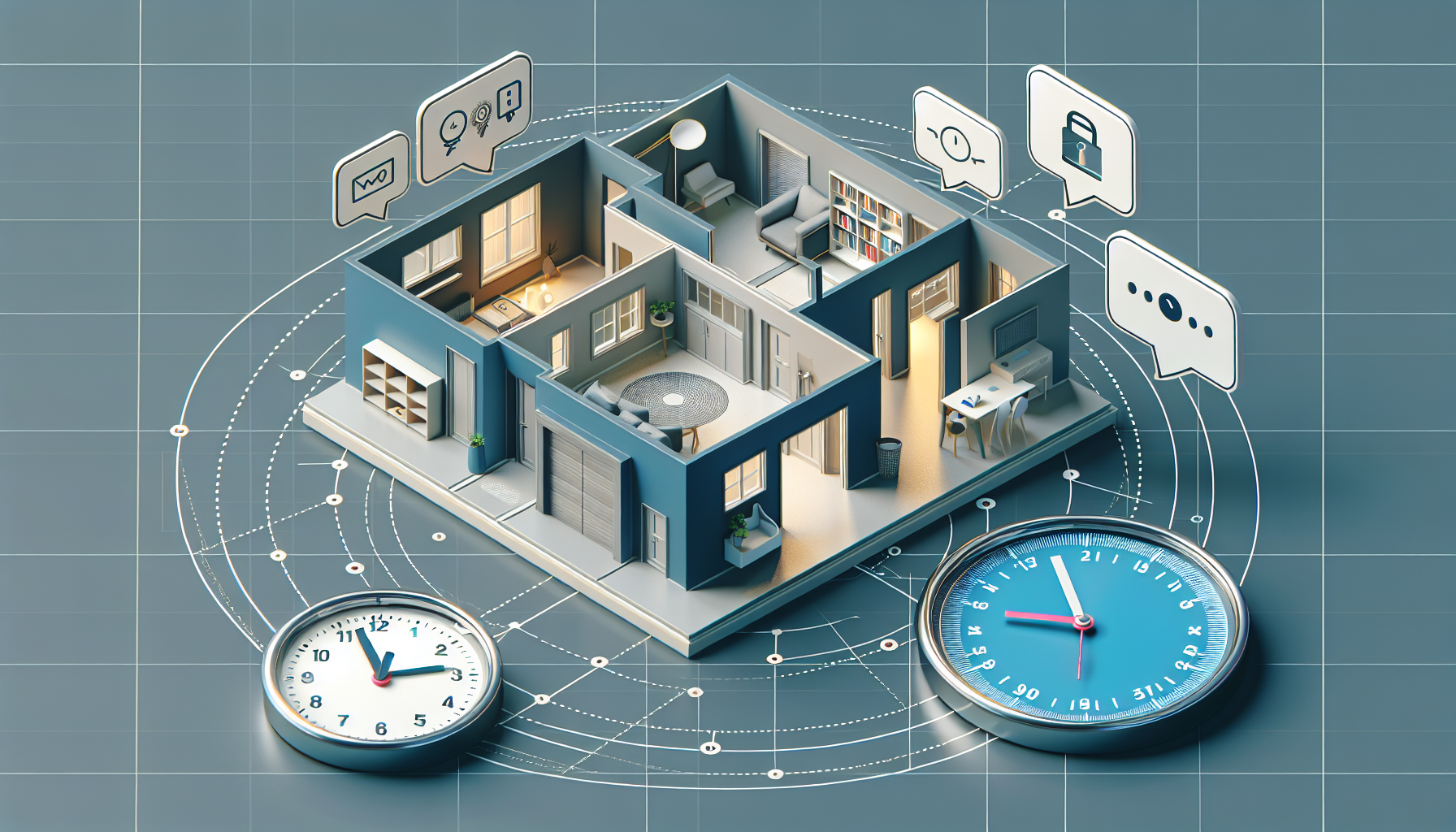Top Strategies to Ace Your Listing Appointments: A Real Estate Agent’s Guide
Welcome to the art of acing your listing appointments! Like a maestro conducting a symphony, successful real estate agents orchestrate their appointments with precision, strategy, and flair. Ready to take the baton? Let’s dive into the top strategies to ace your listing appointments and make them resound with success.
Key Takeaways
Preparation for listing appointments includes a captivating presentation, in-depth comparative market analysis (CMA), and eye-catching marketing materials to showcase your professionalism and real estate expertise.
A well-executed CMA informs the pricing strategy by considering local market trends, property characteristics, and comparable property sales, adding credibility to your expertise and fostering client trust.
Building successful client relationships hinges on clear communication, tailored marketing strategies, leveraging technology such as predictive analytics and social media, plus adding personalized touches that make clients feel valued and cater to their unique needs.
Essentials for a Successful Listing Appointment

Being a real estate agent is akin to being a stage director. Each listing appointment is a show, with its unique script, actors, and setting. And like a successful director, a real estate agent needs to master their craft. The essential elements of this craft are crafting an engaging listing presentation, conducting a thorough comparative market analysis, and preparing impressive marketing materials.
We will delve deeper into each of these elements.
Crafting an Engaging Real Estate Listing Presentation
A captivating listing presentation is like a well-crafted screenplay. It must be engaging, informative, and leave potential clients eager for more. An engaging visual presentation effectively conveys information, leaving a lasting impression on clients. It efficiently communicates visual information, which is processed significantly faster than text, making it an ideal tool for engaging visual learners.
One way to demonstrate your real estate expertise is the ‘reverse’ realtor listing presentation approach. Imagine walking homeowners through a case study of your past successes in reverse order, highlighting steps such as broker preview, photography and videography, and staging. This method showcases your capability and the steps you take to deliver results.
Local market data, including local market statistics, is a vital component in your listing presentation. It provides homeowners with insights into factors influencing the pricing of their home for sale. Using effective visuals such as charts or graphs can enhance clients’ comprehension of historical sales patterns, sales velocity, median price ranges, and other pertinent market data.
Imagine the impact of showcasing your previous listing images, particularly those captured by professional real estate photography, and addressing any remaining questions homeowners may have about the process. This can greatly help in creating a successful listing presentation and leave a lasting, positive impression on clients.
For more on listing presentations, see our blog: https://www.quickcommissionadvance.com/blog/maximizing-your-real-estate-listing-presentations-in-2023/
Comparative Market Analysis: Your Data-Driven Backbone
Just as a backbone supports and shapes the body, a comparative market analysis (CMA) supports and shapes your pricing strategy. A CMA serves as a valuable assessment tool for determining the accurate pricing of a home, taking into account variables such as size, condition, and local market trends. It sets realistic expectations and demonstrates your comprehensive grasp of the market, fostering trust with potential clients.
Before developing a CMA, it’s imperative to collect detailed information about the property and its characteristics. Here are the steps to follow:
Identify comparable recently sold properties.
Evaluate similar characteristics, such as lot size, square footage, and neighborhood desirability.
Consider factors such as neighborhood desirability and school districts.
Offer a CMA during listing presentations based on this information, even before touring the property. By following these steps, you can demonstrate readiness and a proactive approach, helping to build a foundation of trust with homeowners.
To achieve an accurate CMA, real estate agents can utilize various resources, such as:
Consulting with agents who have recently sold homes in the neighborhood to gain insights on showing traffic, any negative feedback, and marketing opportunities.
Analyzing recent sales data and market trends to determine the current value of the property.
Considering the condition and features of the property compared to similar homes in the area.
Taking into account any unique factors that may affect the value, such as location, school district, or amenities.
This approach, driven by data, not only provides a sound pricing strategy but also showcases your deep understanding of the local market.
Marketing Materials That Make an Impression

Marketing materials are like the costumes and props in our stage analogy. They enhance the overall presentation, adding color, detail, and depth. Some examples of high-quality real estate photos that can provide a competitive advantage and leave a lasting impression on potential clients include:
Exterior shots that showcase the curb appeal of the property
Interior shots that highlight the unique features and layout of the home
Professional twilight shots that create a warm and inviting atmosphere
Aerial shots that give a bird’s-eye view of the property and its surroundings
These photos are the little details that help set the scene, making the property more appealing and attractive to potential buyers.
The significance of professional photography and videography in real estate is undeniable. Subpar images can negatively impact marketing endeavors and deter potential buyers from viewing the property. Featuring real estate photos that have contributed to enhanced showings and accelerated sales in previous listings can be a compelling aspect of your marketing approach.
In the digital age, platforms like Fiverr are invaluable for enhancing the marketing appeal of your listings. Fiverr offers access to professionals proficient in photos, videos, and virtual staging, thereby creating visually appealing and engaging marketing materials.
Setting the Stage: Preparing for the Listing Appointment

Having covered the essentials, we will now focus on preparing for the listing appointment. This involves aligning expectations with the home selling process and discussing pricing strategy.
We will now look at how to get ready for the main event.
Aligning Expectations with the Home Selling Process
Being familiar with the sales process is akin to knowing the script of a play. It instills the confidence you need to fulfill your role effectively. The home selling process comprises of preparing the home for sale, implementing marketing strategies, and finalizing the deal during the closing phase.
Sellers can prepare their homes for sale by considering the following steps:
Determine the optimal time to sell.
Evaluate expenses and budget accordingly.
Select a suitable listing agent.
Conduct thorough research on the property and its surroundings.
Focus on cleaning and decluttering.
Address any essential repairs or enhancements.
By following these steps, sellers can increase their chances of a successful sale.
Effective marketing strategies for selling a home encompass:
Creative ideas
Experiential marketing
A mobile-optimized website
Email marketing
The creation of high-quality photos
In today’s digital world, where many potential buyers first see properties online, having a strong online presence is indispensable.
Asking Price Strategy: Finding the Sweet Spot
The success of your listing hinges on the right pricing strategy, akin to finding the perfect pitch in a melody where everything harmonizes seamlessly. A comparative market analysis (CMA) plays a vital role in determining the asking price for a property.
The asking price in real estate is influenced by various factors such as:
Neighborhood comps
Location
Home size and usable space
Age and condition
Upgrades and updates
The local market
The property’s unique features also significantly impact its value and can be used to justify a higher asking price. Emphasizing these advantages can help support the higher price point.
Communicating the pricing strategy to clients facilitates the homeowner’s comprehension of pricing mechanisms and your strategy, ultimately leading to long-term cost savings. This is yet another way of building trust with your clients and showing them that you are working in their best interest.
Building Rapport and Trust with Potential Clients
Building rapport and trust with potential clients is an integral part of the listing appointment. This is where your interpersonal skills come into play, helping you create a connection with the client.
Open Houses and Showings: Laying Out the Plan

Open houses and showings are the pivotal scenes in our property selling play. They require careful planning and coordination to ensure maximum impact. Strategic scheduling of showings and open houses involves selecting optimal days and times to attract more visitors, while considering the seller’s availability and tenant preferences. By promoting the events through social media, MLS listings, and showing scheduling websites, you can maximize reach and efficiency.
Accessing properties for showings often involves the use of electronic keyboxes, like Supra, and services like the Centralized Showing Service. These tools facilitate property access coordination with sellers, making the process smoother and more efficient.
Potential difficulties during showings may involve security considerations, dealing with unqualified buyers, and the possibility of visitors being unprepared or overly critical. By organizing scheduled showings to manage attendance, screening potential attendees, and equipping them with comprehensive property information in advance, you can effectively address these issues and ensure a seamless showing experience.
Closing the Deal: Establishing Next Steps
The conclusion of a successful listing appointment merely marks the start of the journey. The next steps, such as scheduling a property visit, agreeing on a listing price, and signing the listing agreement, are crucial to moving forward with the sales process. Arranging a property visit post a listing appointment can be managed effectively using appointment scheduling tools like GReminders. These tools offer automated reminders for clients and assist in managing your schedule effectively, making them a valuable part of your listing appointment checklist.
Determining a listing price with a client involves:
Furnishing a comprehensive comparative market analysis with recent sales data and comparable properties
Engaging in a discussion about the client’s objectives
Elucidating the listing price in relation to market conditions and the property’s value
Being receptive to addressing any concerns
Collaborating to achieve a mutual agreement.
The real estate listing agreement should be signed once the terms and conditions for marketing and selling the property have been established between the property owner and the real estate broker or agent. Post the listing appointment, it’s vital to follow up. Providing the seller with timely information that can assist in decision-making, such as market updates and neighborhood information, upholds client relationships and fosters potential referrals.
Winning Over Sellers: Unique Techniques from Successful Agents
Successful agents possess their distinctive techniques to win over sellers. These techniques, like a magician’s secret tricks, can make the difference between an ordinary and an extraordinary listing appointment.
Leveraging Technology for a Competitive Edge

As a magician wields a wand, a real estate agent leverages technology. Advanced technologies that can enhance your competitive position in the real estate market include:
Predictive analytics
Virtual home tour tools like Matterport
Live streaming capabilities through platforms like Periscope
E-signature services like DocuSign
Online property search facilitation via Doorsteps on Realtor.com
CRM tools for effective client relationship management
Online advertising is another potent tool in your technological toolkit. Utilizing targeted Google Ads for immediate results, implementing a dedicated social media marketing strategy, and creating effective email marketing campaigns can enhance your marketing efforts. Adhering to SEO best practices and generating tailored blog posts and website content can improve your online visibility and attract more clients.
Social media platforms such as:
Facebook
Instagram
YouTube
TikTok
Pinterest
play a vital role in extending reach, showcasing properties, and engaging effectively with potential clients. They offer a platform to showcase your listings in an engaging and visually appealing way, attracting potential buyers and increasing visibility.
Personal Touches That Make Sellers Feel Valued

In the end, real estate is a people business. Personalization is of paramount importance as it allows agents, who are real estate professionals, to forge deeper connections with clients, build trust, and set themselves apart from other real estate professionals.
Personalized services, like closing gifts such as:
customized cutting boards
home cleaning or landscaping services
personalized decor featuring the client’s last name and closing date
local experience gifts
can make sellers feel valued and appreciated.
Providing lunch or dinner during a listing appointment can contribute to a more inviting and pleasant atmosphere, fostering a sense of comfort for potential clients and encouraging them to engage more with the property. This not only makes the meeting more enjoyable but also showcases your dedication and eagerness to establish rapport with your clients.
Summary
Getting your listing appointments right is no different from putting on a great show. With the right script (an engaging presentation), the right cast (building rapport with clients), and the right stage (excellent marketing materials), you can ensure that your show is a hit.
Frequently Asked Questions

What is the main purpose of a listing appointment?
The main purpose of a listing appointment is to listen intently to the homeowners’ needs and make them feel like you have their best interest in mind.
What is in a listing presentation?
A listing presentation typically includes a detailed market analysis, a marketing plan, and a presentation of the agent’s credentials.
What should I wear to a listing appointment?
For a listing appointment, it’s best to wear business casual or even business formal attire, such as khakis and a button-down shirt or a pencil skirt with a nice top for women. It’s also important to consider the client’s dress code preferences, which can sometimes be inferred from their social media.
What is a 2 step listing appointment?
A 2 step listing appointment involves gathering information during the first meeting and then presenting a thorough analysis and recommendations during a second appointment. This process allows for better preparation and a more informed presentation.
What does presentation mean in real estate?
In real estate, a presentation refers to the agent’s pitch to a prospective seller, showcasing how they will handle the sale of the property, from preparation to marketing. The aim of the presentation is to secure the client’s representation in their transactions.







